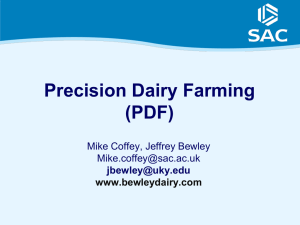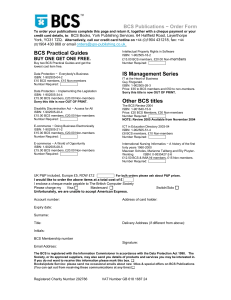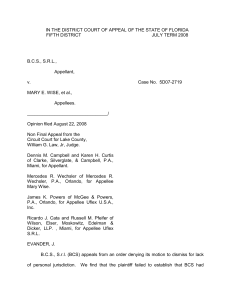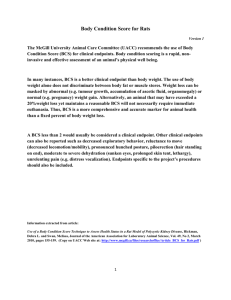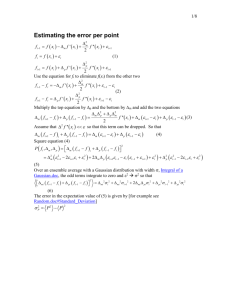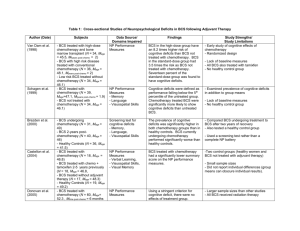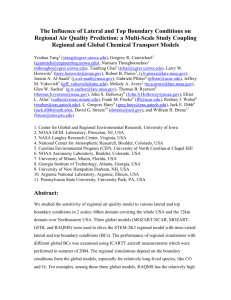biological system
advertisement
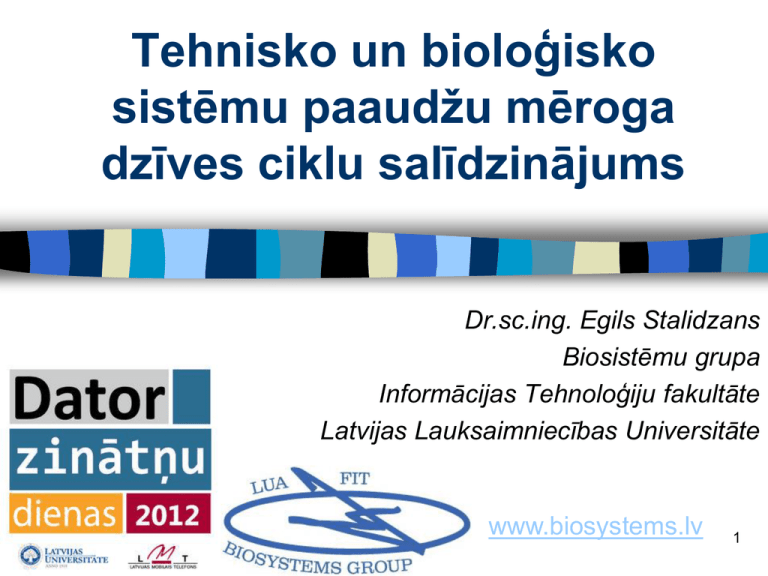
Tehnisko un bioloģisko sistēmu paaudžu mēroga dzīves ciklu salīdzinājums Dr.sc.ing. Egils Stalidzans Biosistēmu grupa Informācijas Tehnoloģiju fakultāte Latvijas Lauksaimniecības Universitāte www.biosystems.lv 1 State of the art (current achievements) in the modelling of technical and biological systems (1) Technical systems: - full quantitative dynamic cause-effect models from elements up to a functioning system are possible Conclusion: rational (sometimes optimal) strategies of repairs, improvements and forecasts of their side effects are possible. Biological systems: - quite good information on the level of organs and modules, - some information about elements (on molecular level), - some information about some cause-effect relationships between elements in some cases Conclusion: rational strategies of repairs, improvements and forecasts of their side effects are exceptions. 2 What are the reasons for different status of modelling achievements in technical and biological systems? They are very different (elements, authors and many other things). Do they have something in common? Cybernetics was defined by Norbert Wiener, in his book (1948) of that title, as the study of control and communication in the animal and the machine. It includes the study of feedback, black boxes and derived concepts such as communication and control in living organisms, machines and organisations including self-organisation. Its focus is how anything (digital, mechanical or biological) processes information, reacts to information, and changes or can be changed to better accomplish the first two tasks. 3 Source: Wikipedia Why and how biological and technical systems evolve and disappear? Can we compare their life cycles? YES, they have some things in common! Both biological and technical systems have evolutionary pressure in multigeneration lifecycle. Their survival is assured by different technologies! Mozga et. al. (2007) Life cycles and competition in modelling of artificial and biological control systems. European Simulation and Modelling Conference, St. Julians, Malta, Oct.22-24. 4 Stable active technical system Stable active biological system Artificial control system (ACS) is a human designed control system. It can be executed by technical, chemical, biological or other means. - technical control system (climate control system in a building, control system of an aircraft), - control system for natural non biological objects (irrigation systems), - human made control system of biological objects (fermentation process control), - human designed control of biological object by another biological object (pest control by purposeful introduction of their biological enemies). Biological control system (BCS) is in biological reproduction process developed control system that ensures internal processes within biological object and interaction processes with environment. Features of biological objects are metabolism and reproduction. BCS controlled biological objects are for example all living organisms (plants, animals, humans) as well as their subsystems (body temperature control, metabolism, processes within a cell). Technical system Goals and tasks Biological system Survive and reproduce Pool of designs Pool of genomes ACS + object BCS within biol. object Behaviour Death Feedback to next generation Behaviour Feedback to next generation Death 8 The lifecycle of technical system includes: 1) definition of targets, 2) design of control system and object, 3) execution of technical control system, 4) behaviour of technical object as observable result, 5) feedback to the design. The lifecycle of biological system has corresponding steps in different execution and includes: 1) predefined targets (survival and reproduction), 2) genome (as design of control system), 3) cells and organism (as execution of biological control system), 4) behaviour of biological object as observable result, 5) feedback to genome (as design of control system). 9 Differences in execution Single design language of BCS Low cost live testing of new designs of BCS enables stochastic design due to biosystems ability to grow No need for technical documentation of design for author or users (stochastic design) in case of BCS 10 Conclusion: lifecycles in multigeneration scale of biological and technical systems are quite similar while execution mechanisms are very different. Conclusion: one can apply the same principles to develop control of biosystems to the level of control of technical systems. 11 Artificial control of biological objects oVia environment without changes in biological control system (BCS) – shift of evolutionary presure: household animals and plants oVia direct genetic changes of BCS (implementation of artificial control system (ACS) into BCS): metabolic engineering, GMO Changes in the genome is the result in both cases. Good? Bad? 12 ACS lifecycle BCS lifecycle Goals and tasks Survive and reproduce Design ACS influenced Genome ACS + Feedback BCS within ACS influenced biol. object ACS influenced behaviour ACS influenced feedback Lifecycle of meld ACS and BCS during control of biological objects. Colored area is the influenced part of BCS cycle. 13 Systems biology: can we explain the opperation of the BCS of an organism? “Yes” means: we have a model! Syntetic biology: how should we change the BCS to get the needed behavior? “How” means: we know the components which have to be implemented in the system. Would be nice to test them on a model in advance! 14 Paldies! 15



